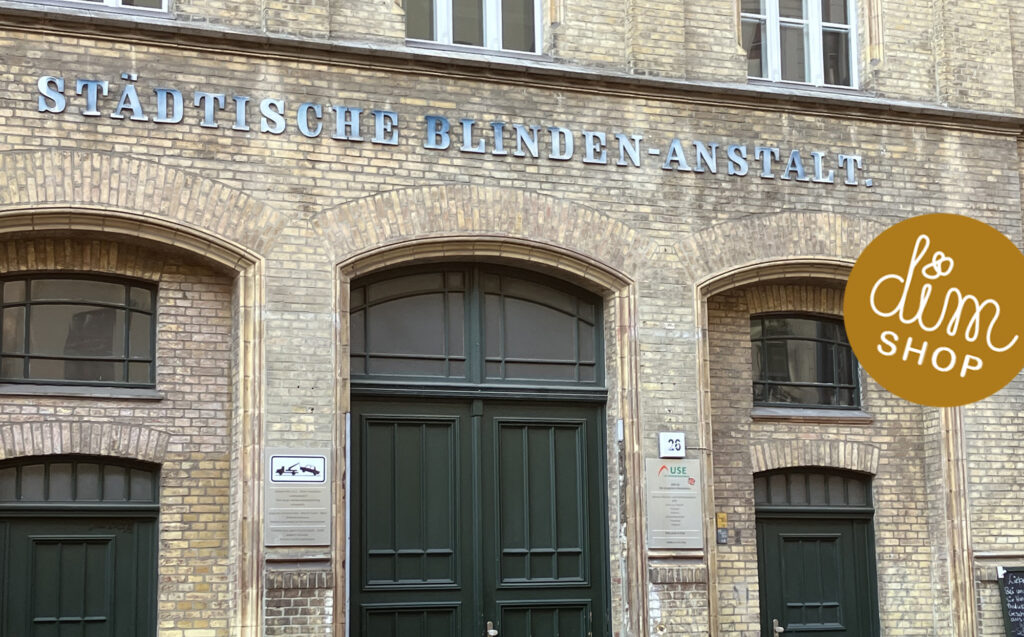Today, we have an abundance of products, but knowledge about their manufacture is rather scarce. Where are they made? Who works on them and under what conditions? What materials are used? Sometimes certificates give us answers to these questions, but in most cases the history of the product remains in the dark.
DIM – The Imaginary Manufactory takes a different approach to manufacturing. In contrast to mass-produced items, DIM products are made by disabled and non-disabled people together using traditional craftsmanship. This is done locally, in Berlin and Brandenburg, as part of the workshops of USE GmbH (Union Sozialer Einrichtungen gemeinnützige GmbH).
The DIM workshops in Berlin-Kreuzberg contain workshops for: boxmaking, ceramics, textile, woodwork, brushmaking and basketweaving.
There are interesting stories to tell about DIM in Kreuzberg. It is housed in an old school and for decades it housed the Städtische Blinden-Anstalt (blind-workers). In 1998 the name DIM came about through a project initiated by Berlin designers Vogt & Weizenegger with the Binden-Anstalt. Together with the brushmakers and basket weavers products came about by designers such as: Volker Albus, Shin and Tomoko Azumi, Matali Crasset, Marti Guixé, Isabel Hamm, Konstantin Grcic, Alfredo Häberli, Arik Levy, Michael Marriott, Tim Parsons, Judith Seng, Winfried Scheuer, Mats Theselius, Oliver Vogt, Hermann Weizenegger.
For this summersemester projekt we work together with the DIM workshops in Berlin-Kreuzberg and there will be options to produce limited series for AW newcomer-shop in the DIM workshops.
about DIM: dim-berlin.de/startseite
what is DIM: dim-berlin.de/was-ist-dim
shop with DIM: dim-berlin.de

